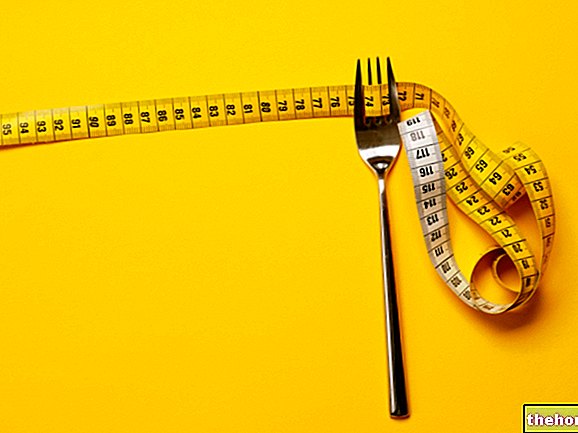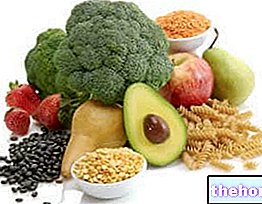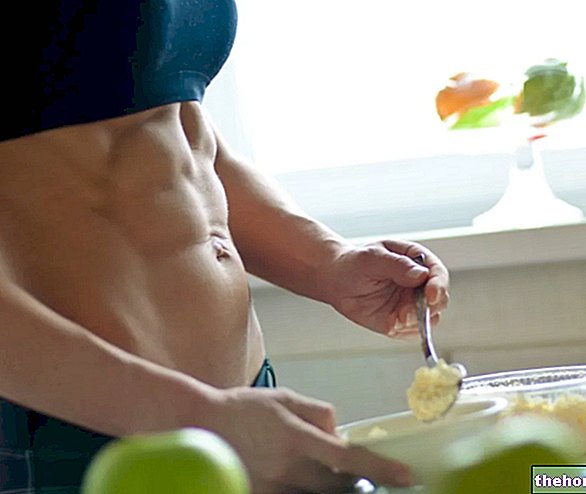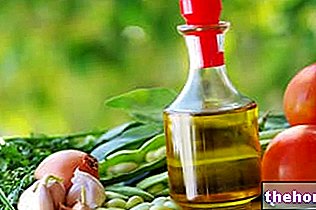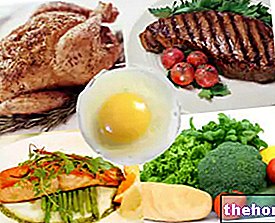The maintenance (or normocaloric) diet is a balanced diet that serves to maintain a constant body weight and to maintain the balance between fat-free mass (FFM) and fat (FM).
Premise
The following indications are for informational purposes EXCLUSIVELY and are not intended to replace the opinion of professionals such as a doctor, nutritionist or dietician, whose intervention is necessary for the prescription and composition of PERSONALIZED food therapies.
Balance of the maintenance diet
By semantic definition, the maintenance diet must be normocaloric and balanced.
.jpg)
First of all, the maintenance diet provides a sufficient quantity of energy to guarantee the state of eunutrition, and respects the organic needs imposed by both physical and mental daily activities. The caloric breakdown in the day fully complies with all individual needs but without exceeding the total energy; generally it is divided into 5 meals, of which 3 main ones (breakfast 15% of the TOT energy, lunch 40% of the TOT energy and dinner 35% of the TOT energy) and 2 secondary or complementary ones (2 snacks of 5% of the TOT energy).
From a nutritional point of view, the maintenance diet must be organized by keeping under control especially those macro and microelements most frequently subject to alteration in the diet. For adults:
- Proteins: 0.75 to 1.2g / kg of desirable physiological weight / day
- Lipids: 25-30% of total kcal
- Of which saturated about 10%
- Cholesterol: not> 300mg / day
- Carbohydrates: the remaining energy
- Of which simple about 12%
- Fiber: about 30g / day
- Iron: 10 to 18mg (excluding pregnant women and nurses)
- Calcium: 1000 to 1500 (excluding pregnant women and nurses)
- Thiamine: 0.4mg per 1000kcal dietary
- Riboflavin: 0.6mg per 1000kcal dietary
- Niacin: 6.6mg per 1000kcal dietary
- Retinol Equivalents: 600-700 µg / day
- B.C. Ascorbic: 60mg / day
Each of the above values must be corrected for: age, sex, build and any special physiological conditions.
Food choices equally respect individual preferences and the indications mentioned in the guidelines for a good and healthy diet.
Example
Female, housewife, mother of two teenage children, consumes 1 glass of red wine a day.
NB: Some weights can be evaluated without the aid of a scale, for example:
- Liquid 250-300ml / g = 1 cup
- Liquid 200ml / g = 1 small cup
- Liquid 150ml / g = 1 full glass
- Liquid 10g = 1 tbsp
- Liquid 5g = 1 tsp
- Grana 10g = 1 tbsp
- 5g grits = 1 tsp
- Fruit or vegetable 150g = medium-small size
- Fruit or vegetable 200g = medium size
- Fruit or vegetable 250g = medium-large size
- Walnut kernel, almond, pecan nut, hazelnut = 3g
- Bread 20-25g = medium slice
- Bread 30-35g = large slice
High calorie diet menu example - DAY 1
High calorie diet menu example - DAY 2
High calorie diet menu example - DAY 3
High calorie diet menu example - DAY 4
High calorie diet menu example - DAY 5
High calorie diet menu example - DAY 6
High calorie diet menu example - DAY 7

